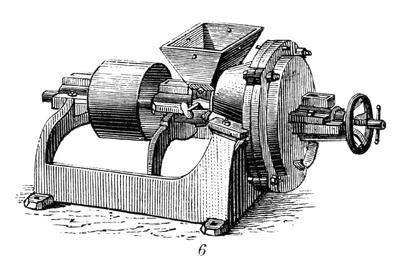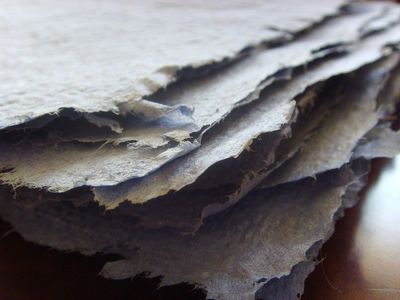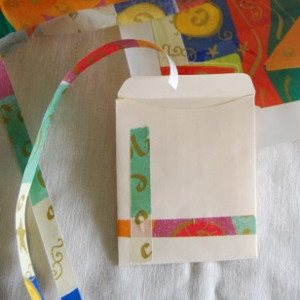History of Paper: Who Invented Paper, What is Paper Made of, and More
 Learn everything you've ever wanted to know about paper with History of Paper: Who Invented Paper, What is Paper Made of, and More. This informative article will answer the origins of paper, who invented paper, how does paper come from trees, and more. Here at AllFreePaperCrafts, we create and share paper crafts all the time, but how often do we think, "Where does paper come from?" This world's paper history is diverse and fascinating, and our collective use of paper products is ever changing.
Learn everything you've ever wanted to know about paper with History of Paper: Who Invented Paper, What is Paper Made of, and More. This informative article will answer the origins of paper, who invented paper, how does paper come from trees, and more. Here at AllFreePaperCrafts, we create and share paper crafts all the time, but how often do we think, "Where does paper come from?" This world's paper history is diverse and fascinating, and our collective use of paper products is ever changing.
Some crafters make their own paper, just as they had to in the early years of paper. Guess what? You can, too! We are also offering tutorials to help you learn how and make your own paper from various materials, including recycled paper products. Using colored or textured paper might just be what you have been looking for to take your paper crafting to the next level.
Get inspired with beautiful ideas in this free eBook, Gorgeous Paper Crafts: 18 Card Making Ideas, Scrapbook Layouts, and DIY Paper Flowers. A handmade paper craft will always appear more thoughtful when the finished project is absolutely gorgeous! These paper ideas may take devotion and skill to complete, but you will be surprised not only by the incredible results, but also by the amount of fun you have creating them.
History of Paper: Who Invented Paper, What is Paper Made of, and More
Table of Contents
Who Invented Paper?
What is Paper Made of?
How to Make Papyrus Paper and other Paper Making Tutorials
Who Invented Paper?
First, there was papyrus, invented by the ancient Egyptians. Papyrus paper was made using the pith of the papyrus plant. The ancient Egyptians wrote on sheets of papyrus and would roll them into scrolls. This is considered to be one of the earliest forms of books. Unfortunately, papyrus was highly affected by both too much moisture and too little. This meant that it was not a great long term solution.
The origins of what we know as modern paper go back to the Han Dynasty in ancient China. By most accounts, an Imperial Court official named Cai Lun was the first to discover paper making. The first type of paper was formed by wetting and mashing together mulberry bark and other fibers with a mortar and pestle. The pulp would then be formed into a sheet using netting and left out in the sun to dry and harden. The Chinese people loved this new invention, and it became very popular across the entire country. Buddhist monks even began creating reproductions of all their prayers. Early versions of paper were also used for maps and calendars.

The idea of making paper moved west along the Silk Road, which was a network of trade routes in the Asia-Pacific region that led to a lot of sharing of ideas through different cultures. By the 8th century, paper making was prevalent in the Muslim-majority countries. The Muslim world refined the process of making paper by using helve hammers and paper mills (run with human or animal power). It then moved to what is now Spain and Portugal and continued west to the rest of Europe. The Europeans actually improved upon the paper mill process by using waterpower to automate them. Later, in America, the Jordan Engine was invented by Joseph Jordan and was used for refining wood pulp.
Our world is the only one we have, so it is important to try and conserve, protect, reduce, reuse, and recycle while we are here. Check out our collection that includes 32 Earth Day Paper Crafts to help you go "green" with recycling ideas this Earth Day (and any other day).
Besides papyrus, other early forms of paper included natural materials like palm leaves and other plant parts, cotton, parchment (any animal skin, usually cow, goat, or sheep), and vellum (calf skin). However, many of these paper types were expensive or difficult to produce, so better options were needed. As mentioned previously, Cai Lun was the first known person to create pulp from trees. The history of paper is vast. Modern paper making uses wood pulp to create the paper we are familiar with. However, it is also common to use recycled paper products to create paper, as it can be broken down and reformed. This method is also much more environmentally friendly than creating paper from scratch.

Currently, wood pulp is made by grinding a tree down and often mixing the wood chips with chemicals that will make the pulp strong enough to form sheets of paper. The water and other liquids must then be removed so that the pulp can dry and be formed into paper. This is done by spreading thin layers of pulp onto mesh screens. The wood pulp is pressed multiple times until about half the liquid has been removed. The sheet of wood pulp is then heated to accelerate drying. The paper may then go through other processes depending on the type. Once that is completed, sheets of paper are wound onto reels. The paper can then be transported and cut as needed more easily.
How to Make Papyrus Paper and other Paper Making Tutorials
If you want to experiment with making your own paper, you are in luck! We have several tutorials that will show you how to make paper using different materials and methods. It's a great way to go green, too! You can even make papyrus paper and see what is was like to write on before technology brought us what we currently use as paper. You can make paper in different colors, textures, and you can even add other materials such as flowers to the mix. Creating your own paper is fun and can then be used with other paper crafts. Below you will find everything you need for making different kinds of paper.
Want to DIY but don't have the time to create adorable paper crafts yourself? 16 Free Printables: Free Printable Greeting Cards and Other Printable Paper Crafts is the collection you have been waiting for. Get your cardstock and scissors ready because for most of these projects, that is all you'll need when you download this free eBook.
Have you ever made your own paper?
Let us know in the comment section!
Read NextHow to Make Paper



















